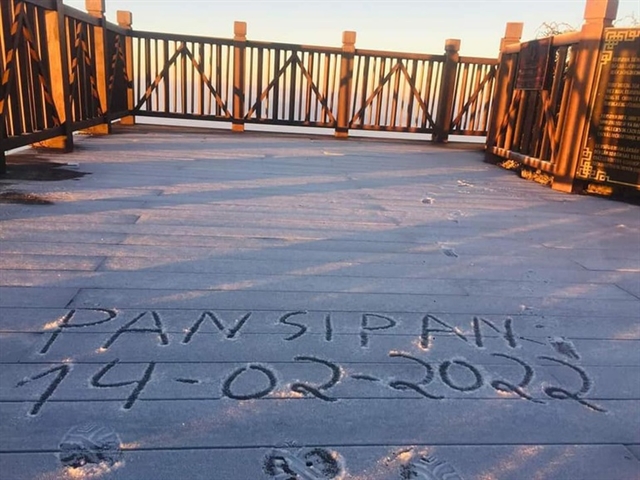 Opinion
Opinion

The northern region was forecast to be hit by a cold spell from February 13 and another from February 19.

|
| Frost appears on Fansipan peak in northern Lào Cai Province on Monday. — VNA/VNS Photo |
Head of the Climate Forecast Office of the National Hydrometeorological Forecast Centre Nguyễn Văn Hưởng talks to Vietnamplus online newspaper about the cold spells expected in February.
How long will the cold and wet weather last?
Due to enhanced cold spells from January 29, localities in the north have been placed under prolonged severe cold weather with rain and drizzle.
Rain is forecast to continue through this month, according to the National Hydro-meteorological Forecast Centre. In March, the cold spells are expected to gradually reduce, though the north-east will still suffer rain, drizzle and fog.
The northern region is forecast to suffer more strong cold spells until the end of the month. How cold will it get?
The northern region was forecast to be hit by a cold spell from February 13 and another from February 19.
The first cold spell will be accompanied by high-altitude wind convergence, which will cause downpours and strong winds across the region. Snow rain and ice are predicted for northern mountainous areas.
The cold spell will be strengthened on February 14-15 but then weaken on February 16-18 and the rain will reduce, helping to raise the temperature.
From February 19, another cold spell is expected to hit the region bringing rain.
What is the average temperature for February?
In early February, the temperature in the northern region was 1 degree Celsius lower than the average of previous years.
For the rest of the month, the temperature will drop by 0.5-1.5 degrees Celsius, mostly in mountainous areas.
Does the National Hydro-meteorological Forecast Centre have any recommendations?
As we forecast, the northern region will continue suffering from severe cold spells from now until the end of the month.
Health experts warn that low temperatures will have bad effects on people's health, and people should keep them warm and limit activities in cold weather. People should not burn coal inside.
Domestic animals should also be kept warm from cold weather, particularly in remote and mountainous areas. VNS
Frost covers Fansipan Mountain peak in Lào Cai Frost covered the top of Fansipan Mountain, the highest peak in Indochina, in Sa Pa town, the northern mountainous province of Lào Cai early on Monday, as the temperature dropped below zero. This is the fifth time that frost has appeared on the Fansipan peak since the beginning of the winter. Frost can damage leaves, flowers and fruits. If serious, plants can be completely killed causing a loss in crop production. The Lào Cai Hydro-Meteorological Station forecasts that in the early morning of February 15, the temperature on Fansipan will remain low and frost will continue. Local authorities and agencies are urgently directing locals to apply all measures to protect plants and animals from the cold. — VNS |




